Editor’s Note: This is the second part of our original GenNow feature, which delves into how Generations Y and Z — plus the events that have shaped them — will influences our spaces for years to come.
In our first of two parts for this feature, we outlined four catalysts that will forever impact the Millennial and Z generations. Specifically, we examined the shared experiences of two recessions, climate change, technological influence and 2020 current events and how they have left and will continue to leave a profound mark. But how does that relate to our work as designers and architects?
Well before the schematic design process begins, the first step is to flesh out the generational paradigms, behaviors, and values in order to focus on the shared vision for a space. In this second part of our GenNow feature, we’ll utilize this research to envision interior design in current and future spaces: where we work, stay and learn. Finally, we’ll envision implications for design into the next decade and how we can reflect — and empower — GenNow in the built space.
Health, safety & welfare in all spaces
In immediate response to the pandemic and the Black Lives Matter movement, designers have an immense challenge ahead: Design workplaces where health, wellbeing and safety are so innate that these elements become invisible. A robust programming phase is essential.
The impact of COVID-19 on interior spaces puts the “invisible” design elements to the forefront, examines the importance of each alongside the visible, and pushes the need to take on a human-centered approach that considers the health, safety, and welfare of people at another level. We’re seeing further validation that interior design is interdisciplinary and collaboration with multiple disciplines is critical in creating better environments for people.
Susan Chung, Ph.D, Director of Research & Knowledge at ASID, suggests, “Instead of the person adapting to the environment, the environment adapts to the person.”
And we’re already seeing the industry respond. The International Well Building Institute has held extensive virtual conversations on our health, safety and welfare in our spaces. After rigorous, rapid and dedicated task force work, IWBI created the WELL Health-Safety Rating for Facility Operations and Management, an evidence-based, third-party verified rating focusing on operational policies, cleaning protocols and design strategies to address a post COVID-19 environment.
But we also must be mindful of how design also can promote racial equity.
Joseph Cephas is the Sr. Vice President at Novita Communications and manages media communications for ASID. He remains heavily involved in the industry as a champion for the conversation around diversity, equity, and inclusion. His perspective on current and future industry conversation is this:
“Architects and designers always play significant roles in public health emergencies. When the country opens back up after the COVID-19 pandemic, people are going to turn to designers to define the new normal. As leaders, those same designers should examine what their role is in response to systemic racism.
Diversity of thought in the workplace yields better results. As firms diversify it will affect interiors in a positive way. Designers play a unique role in impacting lives. They do not design a space for the sake of designing it – they focus on the people who will occupy the space. For far too long Black people have either been an afterthought or blatantly discriminated against when spaces have been designed.”
Given that Gen Z is the most ethnically diverse generation ever, this type of thinking will become more prominent. And as this group becomes a larger percentage of the workforce, it will be essential for designers to champion social causes with integrity and transparency, as well as advocate for more diversity in the industry.
Work
According to a recent study, some 14.6% of the workforce worked from home prior to March 2020. In the first week of following COVID-19 closures, 34% of the workforce pivoted to working remotely. So, during the period of state and local mandated closures, nearly 50% of the workforce was working from home. Kate Lister, president of Global Workplace Analytics, estimates that 25% – 30 % of the workforce will work from home multiple days per week by the end of 2021.
The home office is ripe for thoughtful redesign. Residential design was a driver in workplace design in the previous decade. Now it’s the workplace that will bring strong influence into the residence, such as ergonomic and/or active furnishings. Considerate acoustic planning will be central to facilitating virtual communications, and there will be a keen interest in sound strategies in both the in-person and remote workplace.
Project: ASID HQ – Firm: Perkins + Will DC Office – Photo credits: Eric Laignel
Project: ASID HQ – Firm: Perkins + Will DC Office – Photo credits: Eric Laignel
Project: ASID HQ – Firm: Perkins + Will DC Office – Photo credits: Eric Laignel
At the same time, GenNow is eager for the sense of camaraderie, mentorship and creativity that only being together in-person can bring. And collaboration is a champion for diverse viewpoints. Already a rise in workplace design, collaborative and conference spaces will take footprint from what was once open office.
Short term applications such as bleach cleanable acoustic dividers, wipeable partitions and 6-foot spacing between stations will become the new normal.
Long term, as the two generations move into leadership roles into 2025 and beyond, will the need for static offices and workstations be replaced by at home or remote offices dedicated to tasks? Is it possible that multiple companies may share one headquarters space, alternating days of the week with one another and sanitation schedules? Instead of going to a company’s headquarters to work, it is anticipated that GenNow will go to a company’s connection quarters to connect.
Stay
The idea of sharing a home is not new in many countries and cultures. The economy of home sharing in the hospitality industry is.
As of July, Airbnb resumed its efforts to go public despite significant damage to the home rental business caused by the coronavirus pandemic. The company estimates that since being founded in 2008, its economic impact is $100 billion in 30 countries.
Hotels within the hospitality industry are taking notice. Ian Schrager, for one, opened his latest hotel in New York’s Bowery neighborhood, Public Hotel, in direct response to the rise of the shared travel brand. At Public Hotel, guest rooms are small with integrated technology. Two restaurants and flexible event space are dedicated to authentic, cultural experiences like dance and theatre.
Images courtesy of Gensler Atlanta
Images courtesy of Gensler Atlanta
Images courtesy of Gensler Atlanta
Images courtesy of Gensler Atlanta
Cristi Moore, senior associate and design director, Hospitality, at Gensler Atlanta, tells us that GenNow design is also being influenced by the designers themselves.
“GenNow designers are passionate about all disciplines and don’t silo themselves in one practice area or skill set. Our hospitality team consists of talent encompassing a multitude of practice areas; those with backgrounds in retail, workplace, brand, commercial office buildings, multi-family/residential and more. This diverse experience allows them to look at hospitality from a different perspective—resulting in unexpected, fresh ideas and design solutions. This cross pollination has truly blurred the lines between practice areas – it’s about delivering lifestyle experiences through design.”
Moore references the recently completed Reverb by Hard Rock as an illustration of design that brings people with a common passion together, promoting connectivity and self-expression. Moore anticipates that guests will be looking for different experiences upon their return to hospitality. Since spending time in isolation, customers will be looking for more than say a hotel stay paired with an upscale restaurant.
Steffany Hollingsworth, Founder of PARE, predicts that spaces with access to natural ventilation and ease of “nooking” and circulation will be the most supportive to guests’ experience and desire to patronize an establishment. Voluminous (versus more compressed) spaces that open to outdoor air flow will convey a higher sense of comfort and security for health and safety.
Technology will play an increasing role in providing transactional and high-level experiential ease. Hollingsworth sees a lightning-speed pivot towards different modes of service delivery for restaurants such as pick-up windows and outdoor dining spaces created out of parking lots. Operations that hadn’t previously placed a premium on an outdoor dining/socializing experience will now be seeking every opportunity to offer this for their customers.
Learn
The classroom is no longer relegated to the classroom. Studies have found preschool children benefit from immersive experiences such as gardening outdoors and exploring medium in an artist’s atelier.
Tamie Glass, ASID, IIDA and Associate Professor at The University of Texas Austin says that her students place a greater emphasis on social engagement, originality, and experience.
“In our highly digital and image-driven world, design students realize that people are craving physical, place-based experiences that are sensory-rich and promote social engagement and interaction. When creating concepts, they have to go beyond what they find on Pinterest. They also recognize the struggle between designing for the perfect Instagrammable moment and providing a holistic, human-centered response to the program. Lastly, they realize that integrating technology within physical spaces is expected—today, it is completely intertwined with the service and user experience.”
Firm: CannonDesign led architecture + design in association with EDA Architects – Photo credits: Tim Hursley
Firm: CannonDesign led architecture + design in association with EDA Architects- Photo credits: Tim Hursley
Firm: CannonDesign led architecture + design in association with EDA Architects – Photo credits: Tim Hursley
Firm: CannonDesign led architecture + design in association with EDA Architects – Photo credits: Tim Hursley
Technology and integrated experiences will continue to dominate educational spaces for some time. This fall, the aforementioned University of Texas will offer 20% of coursework online – over 2100 courses. Following a plan from The University of Notre Dame, many institutions are opening early with a semester ending or moving to online after Thanksgiving. And perhaps, there is a post-pandemic opportunity to reduce the cost of college by moving to a hybrid program.
The Lassonde Entrepreneur Institute at the University of Utah is a fitting example of how institutions are accommodating GenNow in higher education.
Together, CannonDesign (Architecture), EDA Architects (Architecture and Design) and the University of Utah (Client, Visionary & Researchers) completed the LEED Gold and ASID Outcome of Design award-winning project. Seeking to accelerate and expand its impact, the university recognized the need to create an entirely new type of learning facility for a new paradigm of entrepreneurial learning that could better connect students to each other, to bold ideas, and to exciting new futures. Lassonde Studios opened in August 2016 and houses four floors of residential space on top of a 20,000-square foot maker space, or “garage.” Students from 35 different majors across various grade levels live and network in the building, which was created in an effort to foster collaboration and innovation.
Future Implications
Across all design verticals, GenNow views sustainability as a must-have, inherent to any good space. Active design, healthy material selection and circadian lighting boost user satisfaction, productivity and wellness. Highly tactile materials and finishes satiate the human appetite for interaction amongst the hours spent on devices and screens. Biophilic design is essential to the GenNow experience. The desire is for immersive nature, with walls and ceilings enveloped in plant life, highly grained woods and bold color accents.
Despite this, tech will continue to be a driver of design innovation. The technological world has given rise to the XR, or the extended reality from the virtual, augmented and mixed reality mediums. As we toggle through from the physical to the virtual, gaming and play is largely influenced. In the subsequent years to follow, will this playful world of extended reality find its way into design and architecture?
In the next chapter of design, technology and augmented reality will continue to empower our ability to communicate locally and globally.
The consciousness created by the civil rights movement and pandemic has overlap in interiors. At the most basic, all inhabitants of a space should feel safe and clean. When the Americans with Disabilities Act went into effect in 1990, the goal was for spaces to become barrier-free. Now, we have an opportunity as designers and architects to ensure health, safety and welfare efforts in a space are so indispensable they are no longer visible — for all of us.
This platform is in unison to more sustainable design and the building industry’s mission to reduce embodied carbon. The welfare of human beings becomes the baseline for all interior design and architecture in the 2020s. If human health and wellbeing was a rising swell in interior design, it is now a tidal wave.
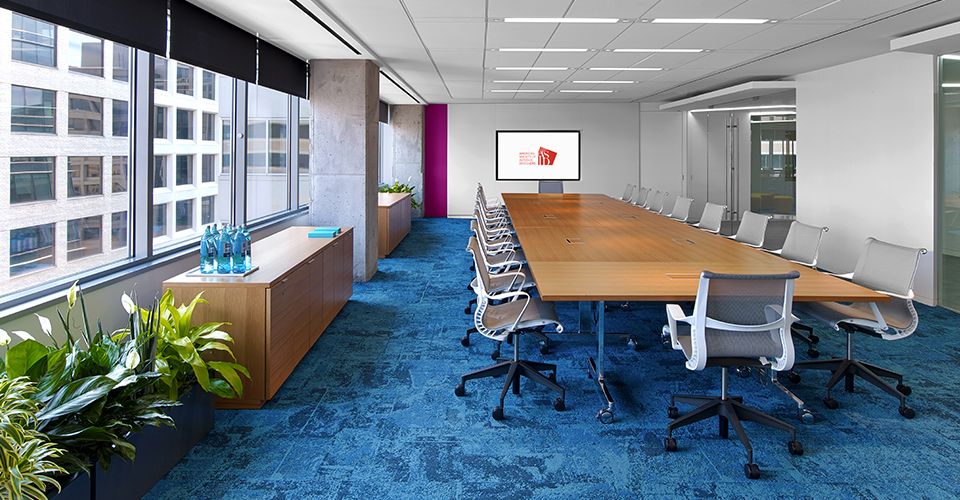
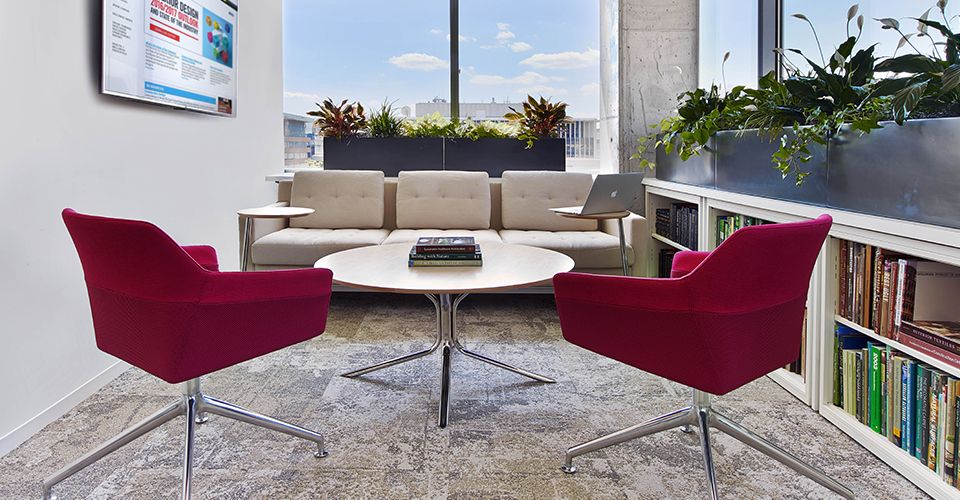
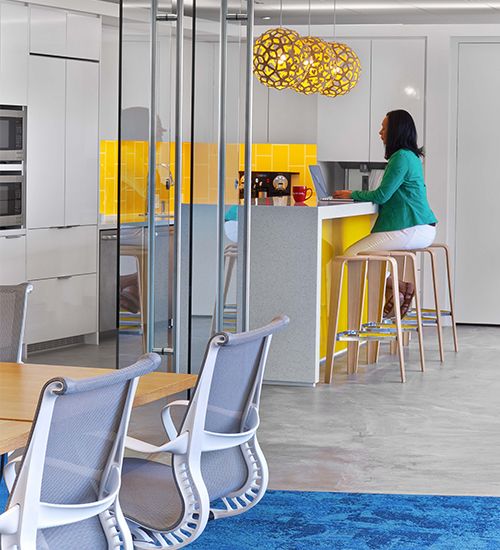
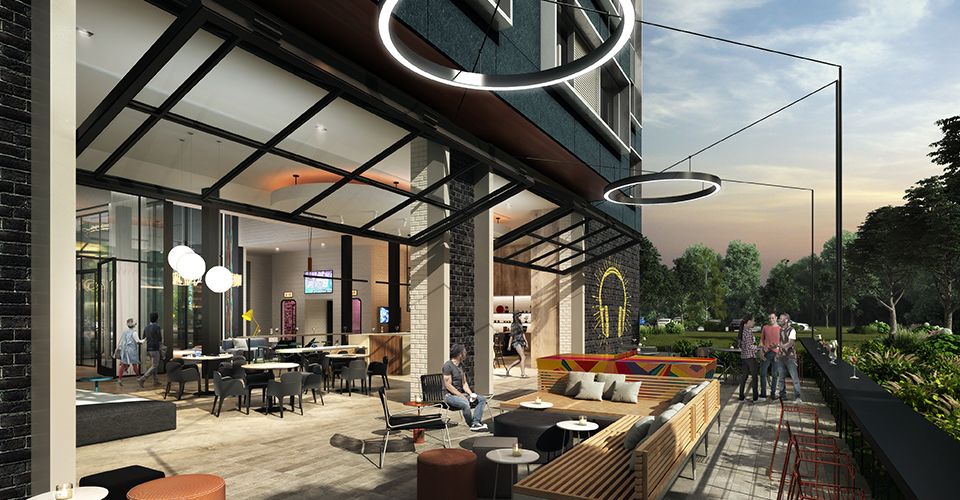
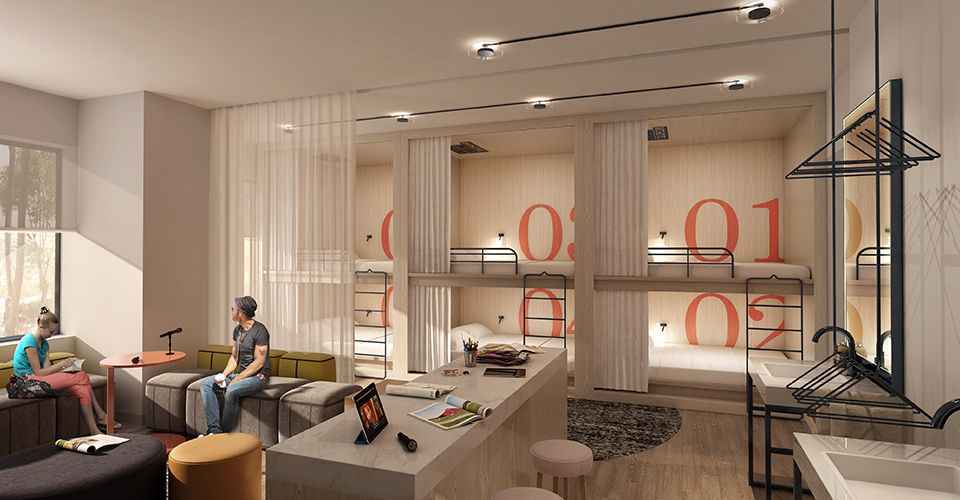
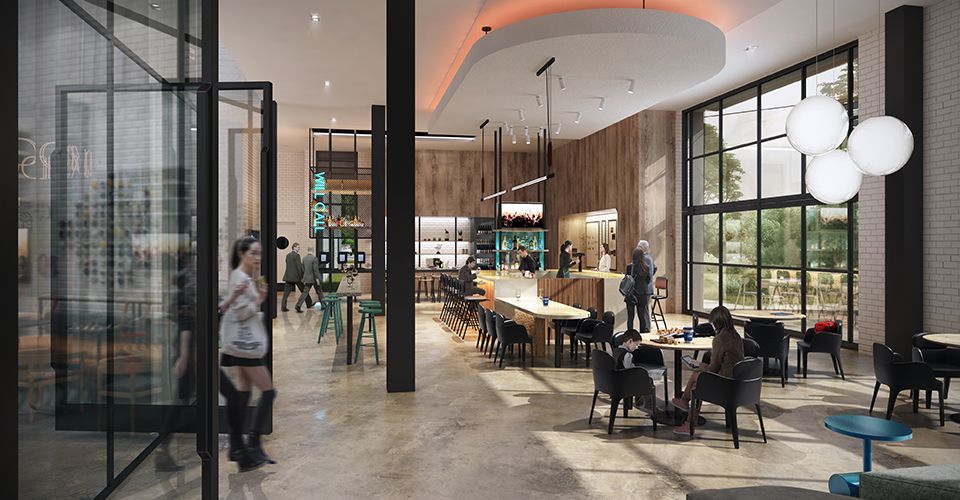


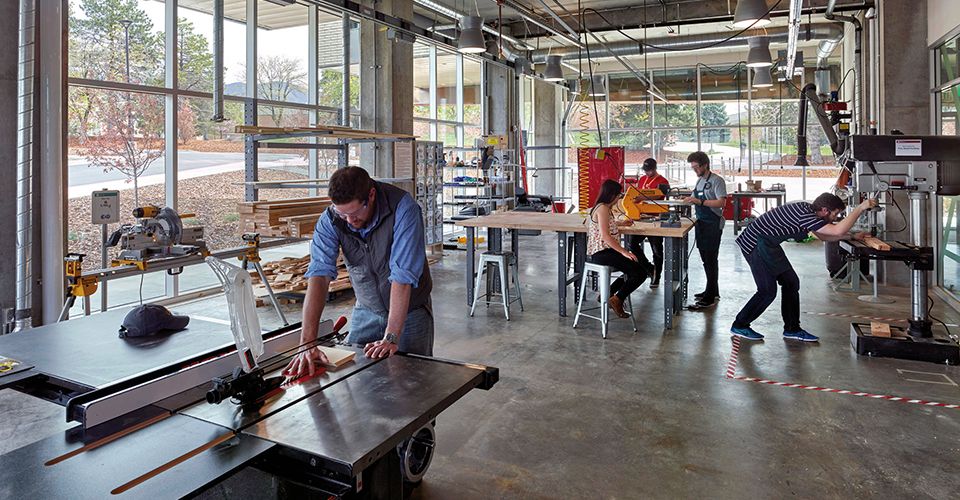

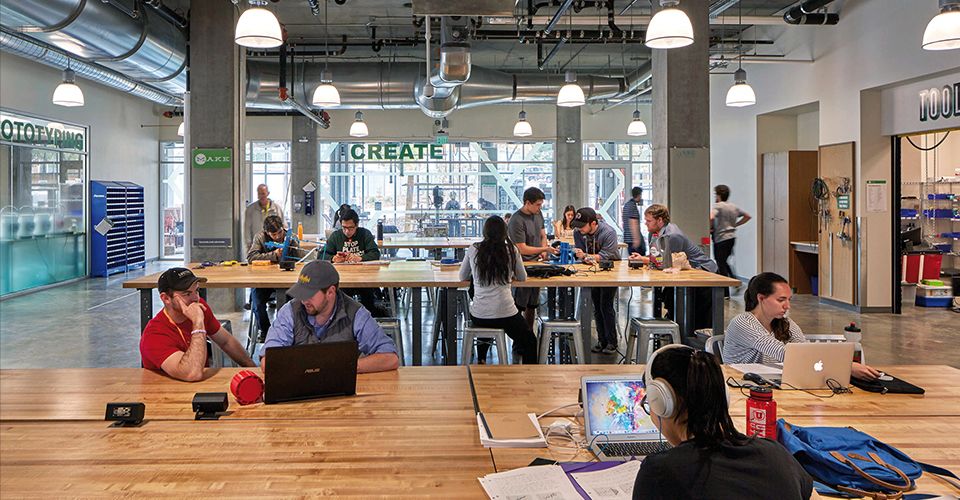
5 responses to “Designing for GenNow, Part 2”
Always have been a fan of all things Interface and have used your products since its inception. However …. Do not forget the “Me Too” movement. It shows some in your photos that you have … women in their “prime” fair amount of skin showing, high heels, etc. The man in the full suit looking on. The lack of that diversity between male and female, architect and designer is very very real and still strongly exists today.
Tracy, thank you so much for your perspective. Absolutely agree, the Me Too movement is a driver for current and future design, as we seek to champion spaces for everyone that promote health, safety and vitality.
I’m so glad to see design heading in a direction that serves all.
Thank you for the article. It is very positive I think to see the necessary such as ventilation, quality air replacement in closed space, acceptable density/capacity…etc. maybe last but not least included in the quest for the sustainable.
Regardless of generation, people with disabilities, the largest minority, have long championed for universal design wherein spaces adapt to the user.